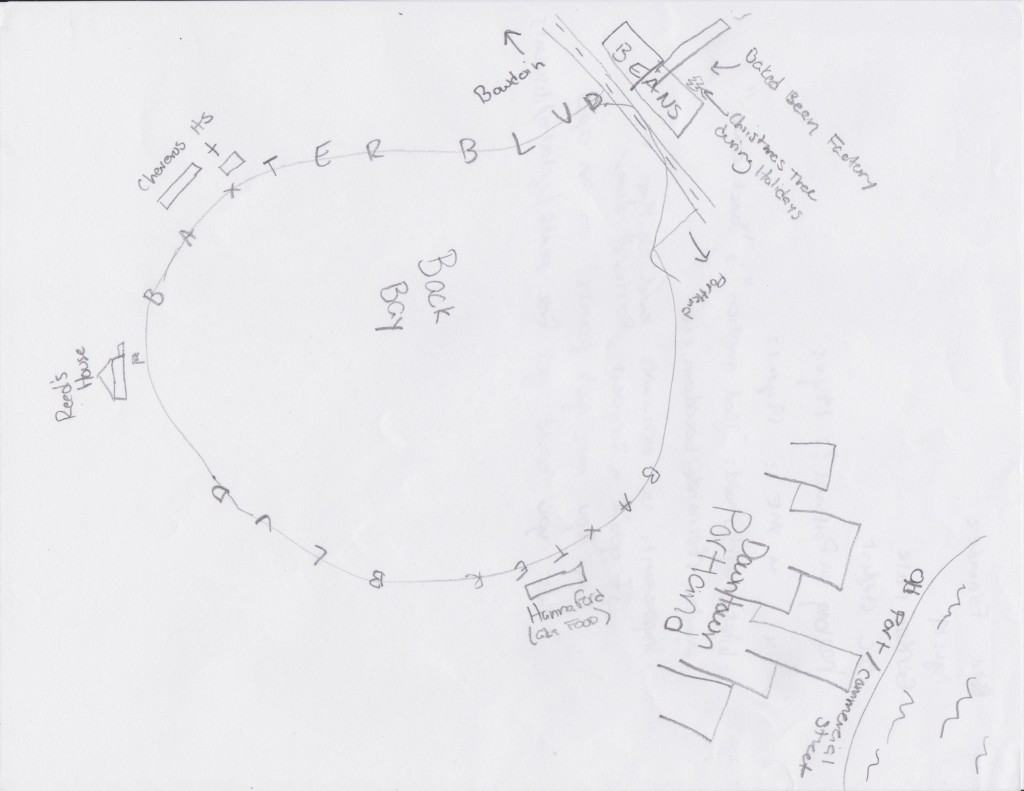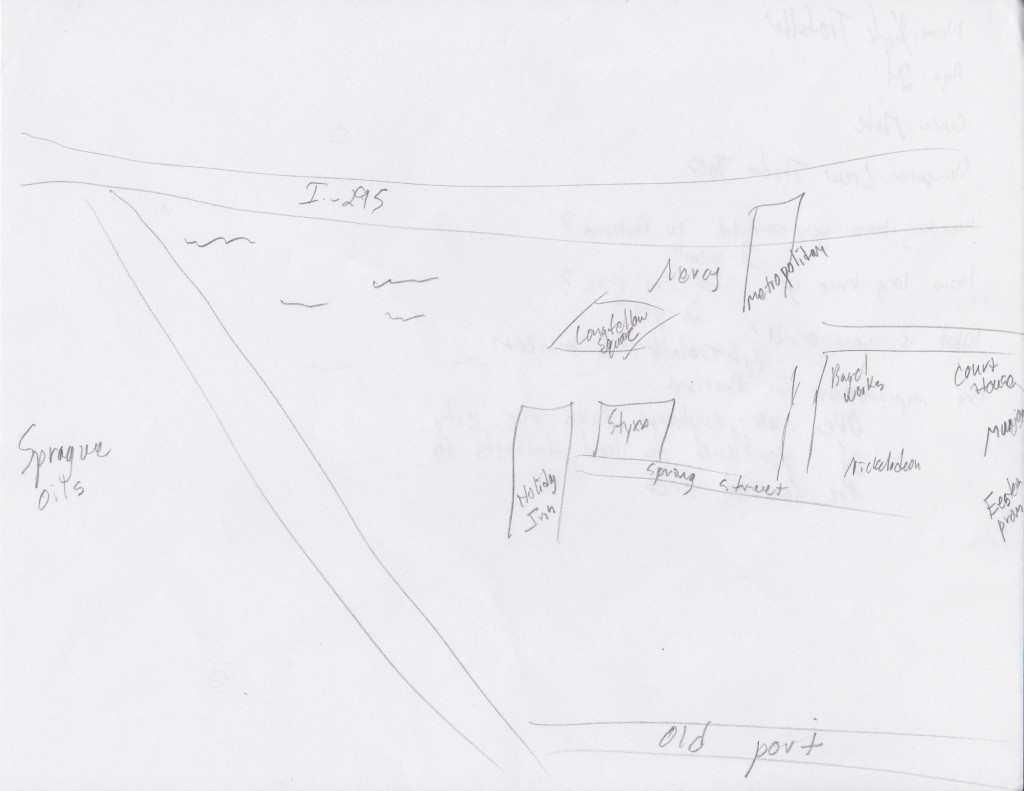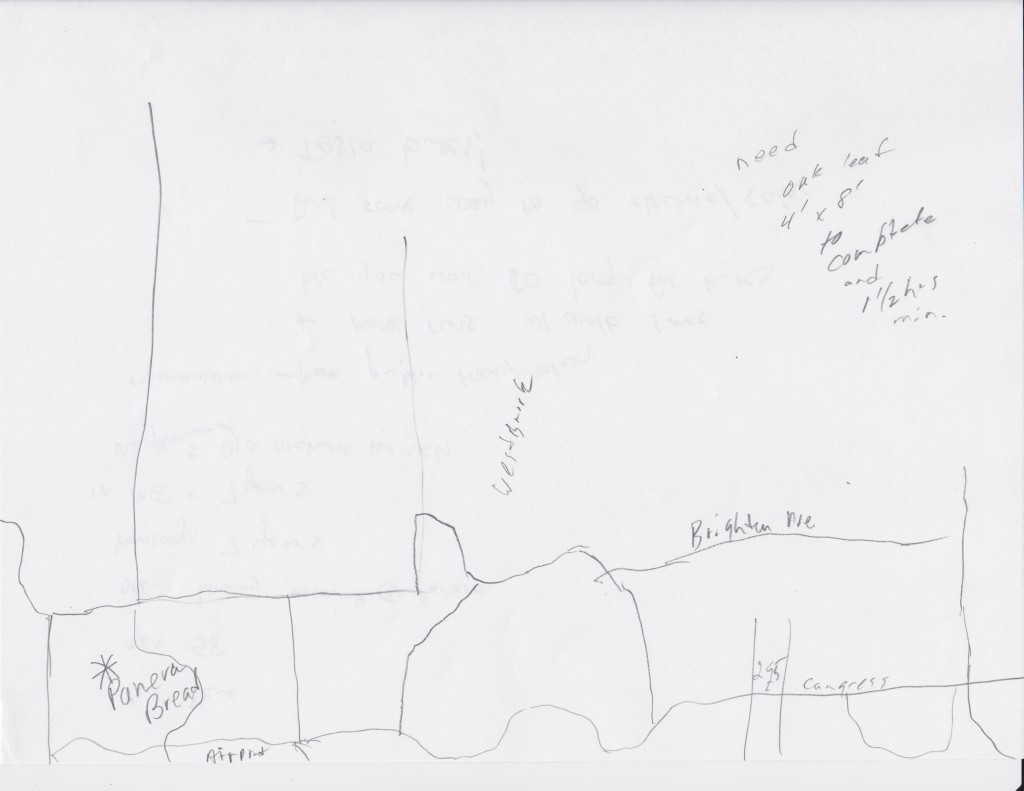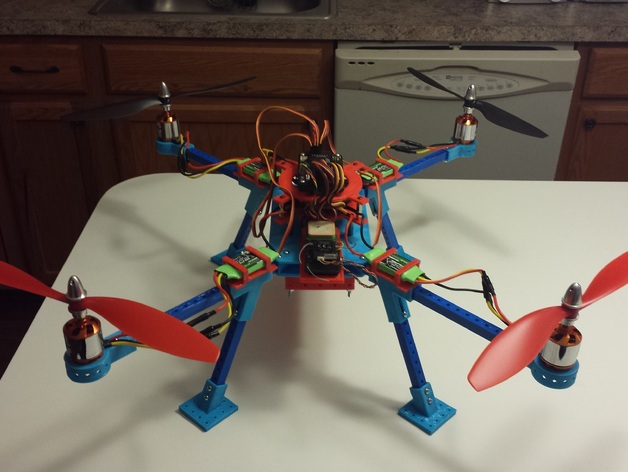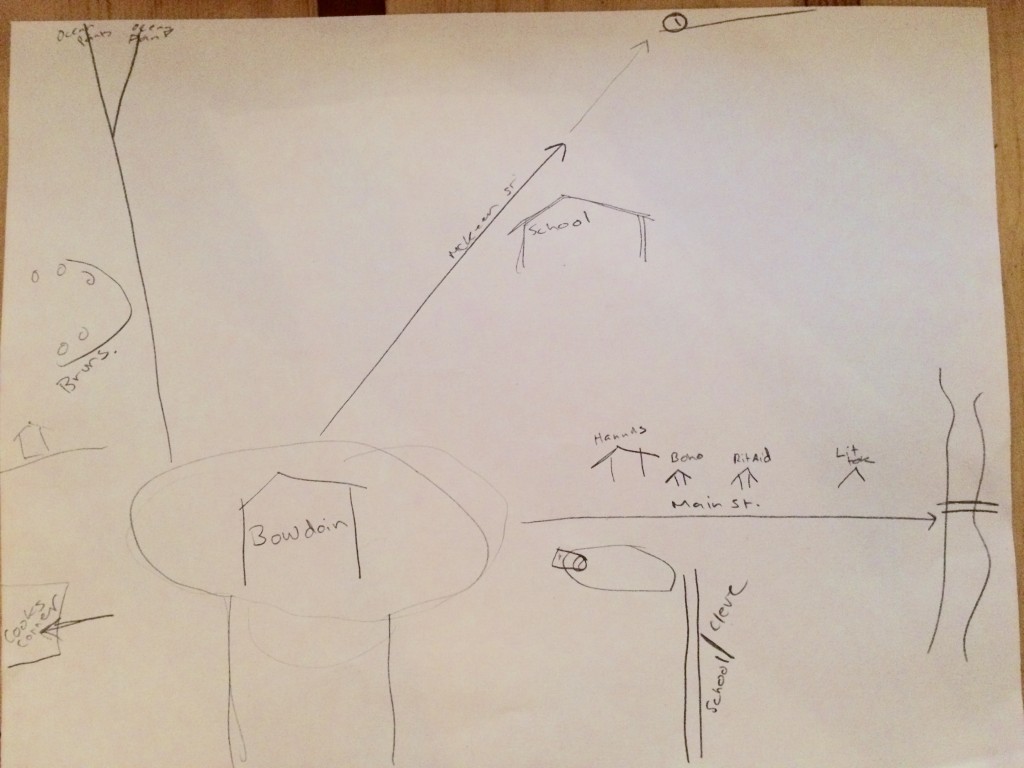Amending the Comprehensive Plan: A Study of Portland’s Recreational Infrastructure
Introduction and Research Question:
Portland, ME is a vibrant, diverse city in an easily accessible location only two hours north of Boston. As a major vacation destination throughout the summer, Portland places great value on its tourism industry. Healthy and vibrant cities must provide residents with proper infrastructure, namely the physical structures that make up the city, to support their and their primary industries. Portland’s infrastructure must support its tourism as well as its significant year-round population, 17.1% of whom are under the age of eighteen. As a substantial percentage of Portland’s population, school-age citizens have certain infrastructural needs that should be met by the city. Portland outlines certain policy goals in the city of Portland’s Comprehensive Plan including one stating that “recreational opportunities should be available for all ages and genders” and that “neighborhood open space should be within walking distance” for all residents. However, playspaces in Portland are not all easily accessible by children and do not serve children in all four seasons. For Portland to successfully meet its own goal of providing playspace infrastructure for its youngest citizens, it needs to provide more playspaces throughout the city, but also playspace infrastructure that is functional in multiple seasons and various weather conditions. I propose that Portland not only expand the number of playspaces in the city, but also create technology-controlled, weather-adaptable playspaces for children to use throughout all four seasons of the year.
Approach to the Common Good:
Residents in cities select a city in which to live for various reasons. However, one thing that all residents in any given city have in common is that together, they make up the living and breathing aspects of that city. Because of their proximity to restaurants, cultural hubs, and downtown areas, city residents often take for granted the variety of services and experiences to which they have access. There seem to be an endless number of perks to living in a city. However, many of these perks and services are expensive, and not all city residents are wealthy. Is a city truly accessible to all and benefitting the common good if it is not giving opportunities to all of its residents? While open park and recreation space is seen as a public good, it is often located in regions not easily accessible by lower socioeconomic classes. Further, playgrounds that do exist in lower-class neighborhoods are often dilapidated, run down, and known as dangerous locations after dark. In these circumstances, how can we create something that is accessible by all and for the common good? In my mind, children have a “right to play” similar to Henri Lefebvre’s “right to the city.” While the idea of creating something for the common good usually refers to the production of something that is entirely inclusive to all populations, children seem to have been vastly underserved in many other aspects of city planning in Portland, and therefore deserve to have something created specifically for them. If Portland as a city lists a policy goal relating to giving more of the population access to park and play space, then Portland needs to provide experiences for all, including the less wealthy and those without a vote: youth.
Approach to the Smart City:
One way in which a city can be characterized as a “smart city” is if aspects of the city are capable of adapting technology to fit the needs of the city. This could come to fruition in many ways. For example, this can be achieved with sensors that trigger changes in functionality of an office building depending on the number of people inside and whether they are working alone or collaboratively. The definition of a smart city varies depending on the goals of the project; they can benefit citizens economically, socially, politically, or culturally. There are also many methods by which a smart city can be created. Certain smart cities are built from the ground up; one example of this is Songdo, a city that is being developed as an “international business district” in South Korea. Other cities can become “smart” over time depending on the integration of technology into pre-existing city life.
I see a smart city as a city that is able to use technology to make itself more accessible to all residents. Portland is a very quaint city in that it fits within a specific New England architectural style, so a mass overhaul of Portland’s architecture to would not only be expensive, but would cause Portland to lose its New England tourism draw. Portland is capable of incorporating technology in other ways in order to benefit all of its citizens. As Margarita Angelidou says in her article “Smart city policies: A spatial approach,” “emphasis should be placed on regenerating degraded urban areas,” rather than just starting from scratch. This is entirely applicable to playspaces in Portland, as Portland’s already existing playgrounds can be redone and new ones can be created in derelict space in order to create technologically advanced, adaptable playgrounds.
Literature Review:
While the idea of a “weather-adaptable” playground is entirely new, the idea of play as a crucial part of a child’s development is supported by a number of national and international organizations. For example, the USA chapter of the International Play Association’s stated purpose is “to protect, preserve, and promote play as a fundamental right for all humans.” Roger Hart, the director of the Children’s Environments Research Group at CUNY, echoes this in an article in which he makes a claim about children’s right to play as a “basic right, fundamental to children’s development” based off of the UN Convention on the Rights of the Child. The UN Convention on the Rights of the Child was a meeting in 1989 that wrote a document with a number of articles relating to the rights of all children. Article 31 of the document declares that “States Parties recognize the right of the child to rest and leisure, to engage in play and recreational activities appropriate to the age of the child and to participate freely in cultural life and the arts.” Since then, many researchers have worked tirelessly to stress the importance of play in children’s lives and how to incorporate new ideas of play into playspaces.
A considerable portion of literature on the idea of play is primarily focused on the link between outdoor playtime and its medical benefits, such as a decrease in obesity. More recent research has focused on creating new kinds of playspaces as well. In an article for Parks & Recreation, associate editor Samantha Bartram discusses two important thoughts, the idea of “play deserts,” spaces where there is a lack of playspace, and how fewer than four out of ten Americans live within walking distance of a park. In another article for Parks & Recreation, Steve Casey discusses the redevelopment of a playground in Missouri into an adventure playground. This playground not only incorporates the idea of “free play” into its design, but also happens to be a very environmentally sustainable playground in its construction and function. These articles both highlight the need to create playspace where it lacks and the need to do so in creative and ecologically friendly ways. They reference the ways in which the development of adequate play space is difficult; in certain regions, it does not exist at all, and in others, economic, geographic, social, and visual factors have to be taken into account before the construction of a playground.
While researchers are away of the importance of play in a child’s development, very little research has done about the incorporation of smart technology into playspaces. In my research, I browsed numerous technology websites to look into how playgrounds are currently being designed. My search led me towards three websites in particular, wired.com, gizmodo.com, and nytimes.com. Through these websites, I found numerous contemporary playspace ideas. One article I read on wired.com outlines the creation of a company, Free Play, focused on “creating a series of abstract play structures that will challenge children’s creativity during playtime.” Free Play structures are designed in a way so that children can interact with them how they please, a very new idea compared to a playground containing a typical swing and ladder. Giving children the freedom to interface with playspaces in unique ways allows them a certain level of freedom that does not necessarily exist in a standard playground.
 Figure 1: A playspace designed by Free Play, a company focused on bringing imagination-based play to children through unique playspace pieces.
Figure 1: A playspace designed by Free Play, a company focused on bringing imagination-based play to children through unique playspace pieces.
Another article on wired.com outlines a 2010 contest on the website for designing the future of playgrounds and contains images of newfangled playgrounds that could exist in the year 2024. These playgrounds are complete with an autonomous stroller rink, 360º rocket swing, and 10-G merry go round. While these ideas are not currently feasible in terms of safety, cost, and implementation, they speak to the creativity that can go into the construction of playgrounds today.
An article from the New York Times, “Beer for Me, Apple Juice for Her,” outlines a very unique idea of a playspace, the German beer garden, as a space in which parents and children can come together, both indoors and outdoors, to play. In one beer hall in Brooklyn, NY, there is even a “Babies & Bier” playgroup with a $10 entrance fee that includes snacks and drinks (both alcoholic and nonalcoholic). The owner of the Brooklyn beer hall started the playgroups “to address a lack of indoor play spaces” because she found that playspaces options were quite limited in inclement weather. While not exactly smart technology, this is a unique way to incorporate the element of play into less-traditional locations and to acknowledge that play can be encouraged and incorporated into other cultural traditions.
The final article I will discuss is a gizmodo.com article that describes a Danish plan to convert parking garages into multi-functional spaces. By adding open space primarily on top of parking garages, Copenhagen will be able to use otherwise useless space and turn it into parks, workout zones, and gardens for its residents. While this idea is not necessarily weather-proof or adaptable, it is one way in which cities can revamp pre-existing structures into new, more aesthetically pleasing, and functional spaces.
 Figure 2: A sketch of what the Copenhagen parking garage playspaces could look like.
Figure 2: A sketch of what the Copenhagen parking garage playspaces could look like.
Methodology:
Over a period of two months, I spent time exploring Portland and observing my surroundings. While at a café in the Arts District, Local Sprouts Cooperative, I realized that there was a significant population of children in Portland that I had not previously noticed. I visited Local Sprouts Cooperative on a cloudy Saturday morning in late October and found the café to be almost entirely populated by parents and their young children. Local Sprouts Cooperative seems to be a very kid-friendly café and even provides space in a corner of the café as a children’s play area. Seeing such a high density of children in a café made me wonder why they were playing there and not outdoors in a playspace. If the weather were accommodating and they play space were close by, might parents have preferred to be there with their kids instead of packed into a café’s children’s corner?
The next portion of my research was spent making observations throughout a neighborhood while on a transect walk. I chose to walk through East Bayside and Munjoy Hill and focused specifically on looking for examples of educational infrastructure. For the purpose of my walk, I wanted to look at where schools and their playgrounds were located among the neighborhoods. Prior to my walk, I made note of where schools were listed on Google Maps so that as I walked by them, I see whether they had playgrounds. Many of the schools listed on my map did not actually exist; further, there were very few playgrounds spread out through the two neighborhoods. While my fieldwork has been limited in locations of Portland as a whole, the lack of playgrounds in the downtown area makes me think that Portland is underserving its youth by not providing them with their “right to play” and their “right to the city.”
Having finished my physical fieldwork in Portland, I turned to my computer for the next portion of my research. Using QGIS Software, I mapped out locations of schools and playgrounds in Portland (Figure 3) to look at where schools were located, where their specific playgrounds were located, and where neighborhood playgrounds were located with respect to schools. Looking at this map, however, I realized that it was not enough to simply map out the locations of schools and playgrounds. While many students are able to go to playgrounds straight from school, students, in my experience, are more likely to play near their homes. For this, I needed to create another map detailing where playgrounds are with respect to where the majority of students live.
Figure 3: Location of Portland schools and playspaces on mainland Portland. Data from City of Portland data sets, kaboom.org.
In order to do this, I mapped data from the US Census against the locations of schools and playgrounds (Figure 4). Using the percentages of residents under 18, I was able to compare where children live in Portland to where schools and playspaces are. The darkest blue portions of the map are the highest percentages of under-18 residents, between 21.8% and 24.4%. The white portions are the lowest percentages of under-18 residents, between 6.21% and 12.22%. On both maps, I chose to omit island portions of Portland, as full census data was not always available and schools and playgrounds were few and far between.
Figure 4: Location of Portland schools and playspaces and percentage of residents under the age of 18. Data from City of Portland data sets, kaboom.org, US Census.
The final element of my research was to look at how playgrounds are being designed and used elsewhere as inspiration for my policy recommendations for Portland. For this, I turned to the internet and looked at a variety of sources, including academic, media, and news sources. Many of these sources were on the development of new, more imagination-inspired playgrounds (such as those mentioned in the Literature Review section); others were on the idea of play as a necessary part of children’s development.
Findings:
When I looked at both of my maps, I found that Figure 3 makes it seem as though there are quite a number of playspaces around Portland near all schools. However, with the addition of the US Census data, it became obvious to me that while there seems to be a larger concentration of playspaces in the downtown area of Portland, there are very few playspaces in regions where children actually live. The darkest blue portions of the map in Figure 4 are not only the regions with the highest portion of under-18 residents, but are also the regions with the fewest playspaces.
My online research led me to numerous playspace ideas that have not been widely developed yet, but sadly did not lead me to any already existing, physically adaptable, weather-proof playspace ideas. While many people are working towards new ideas of playspaces and trying to stay away from a classic model of swing set, ladder, and monkey bars, no one has gone past the imagination playground to create a playground model that is functional in different weather conditions.
Discussion:
My research has led me to the conclusion that Portland not only needs more playgrounds, but also needs weather-adaptable playgrounds so that children might have the ability to play outside throughout all four seasons. I also concluded that Portland is currently failing to provide access to parks or play space as proposed in its Comprehensive Plan. If it is recommended that people have some kind of park or play space within walking distance, or ½ mile, from their home, it is impossible that Portland’s youth have adequate access and ability to get to a park or playground. Portland is not living up to its own policy if it does not add playspaces in the areas of highest under-18 population density.
I propose that Portland expand the number of playspaces predominantly in two areas, in zones where there are too few playspaces and a high density of the under-18 population, and in poverty zones. By placing new playspaces in these areas, they will hopefully be able to accomplish two goals. First, they will support the city’s goals to provide playspaces, and second, they may contribute to the revitalization of impoverished communities. I also believe that creating playspaces on top of already existing buildings such as parking lots (similar to the idea being implemented in Copenhagen) is a viable way to create playspace infrastructure in areas where there might not be already existing city-owned free space. Portland is not a city full of skyscrapers, so rooftop gardens and playgrounds in the downtown area would also allow many people a beautiful view of the waterfront.
Most interestingly in my mind, I propose that new and pre-existing playspaces be designed or redesigned in such a way that they are physically adaptable depending on weather conditions. Maine is known for its snowy conditions, and in the case of inclement weather, of which there is a significant amount during the winter, children are stuck inside to play. Playgrounds can be designed with automated moving parts, sensors, and computer connections to change their function based on current weather or weather forecasts. For example, a playground could have a portion that in rainy weather has a covered portion to keep segments of the playground dry and usable in the rain. Other structures can be built on inclines and designed in such a way that integrate scientific exploration in the summer vis-à-vis running water, which helps kids learn about creating and changing currents. Similarly, these structures could have a retractable cover that can then convert into speed controlled, toboggan-like apparatus creating safe snow play and allowing children to sled in more regions of Portland. Playground function would only adapt based on the current outdoor weather or the weather forecast, but seeing as Portland often has rainy or snowy weather, the playgrounds would never be too static in their function. To add to the idea of playspaces in paring garage space, playspace can be designed and built into the second to last level of a garage, providing views and air, but protection from snow and rain. Lastly, technology could also be used to identify materials that are ecologically safe and made of a material that is not slippery to gloves and mittens. So many young people, geared up in winter wear, would love to play outdoors, but cannot grip or safely maneuver play areas.
Technology can enhance a playground’s adaptability. By connecting directly to a weather forecast or Portland’s main weather system, playgrounds could be programmed to move parts prior to a change in weather. All this would take is a simple computer connection to a main database and, either automatically or at the push of a button from someone in Portland’s Recreation and Facilities Management Department, a playground would adapt its moving parts to best fit the weather circumstances. Playgrounds could also be outfitted with sensors near the entrances to gauge how many people are using them and at what times of the day and year they are most frequently using them; this data could be used for future analysis of locational placement of new playgrounds as well as reevaluation of existing playgrounds and their popularity.
New and renovated playgrounds placed in more locations around the city would impact a larger number of residents in Portland. By giving more people walking distance access to a playspace and the ability to use the playspace in all kinds of weather, more of the city’s population would be served for the better. The audience for playspaces would be primarily youth, but not only those of a high socioeconomic class. Statistically speaking, low-income students spend more time in front of a TV screen than their high-income peers and therefore are more likely to struggle with issues of obesity. Outdoor playspaces can act as a means by which to keep youth off the streets, but also limit their indoor screen time and keep them healthier.
Portland’s Comprehensive Plan, with detailed goals for recreational access for its residents, was drafted in 2002 with guidelines for a recreational plan published since 1995.
Now, almost 20 years later, it seems to me that Portland has still not met these goals for recreational space around the city. Not only does Portland’s official policy on the matter state that Portland will “develop a comprehensive management plan for the City’s park system… to meet the needs of Portland’s citizens” but it also states that Portland will “acquire and improve additional facilities in neighborhoods, which have been determined to have inadequate or insufficient open spaces and recreational resources.” I believe that Portland needs to amend its policy documents so that it can work towards giving more people the access to parks and playgrounds within walking distance of their homes and take measures to provide adequate recreational opportunities throughout all four seasons.
Conclusion:
The City of Portland is a thriving, cultural hub in northern New England. However, its play infrastructure is distributed inequitably and inadequately to its various neighborhoods. In order to provide its citizens with proper park and playspace infrastructure, Portland should amend its policy documents in order to provide more and improved playspaces throughout the city. Existing playspaces should be revamped and new ones should be created in order to give all of Portland’s youth adequate access to play. These playspaces should be designed to be technologically sound and versatile; if they are able to change their function throughout all four seasons of the year, then more youth will have access to them at all times, regardless of weather. As Carmen Harris, epidemiologist at the CDC, says, “As great as technology and engineering are, we have perhaps engineered ourselves out of physical activity.” Using technology to improve the quality of play and availability to it across all four seasons and to increase access to playspace for all of its citizens, independent of neighborhood, Portland can engineer itself back into giving more people the possibility of physical activity and show other cities the kind of technology pioneer that Portland can be.

